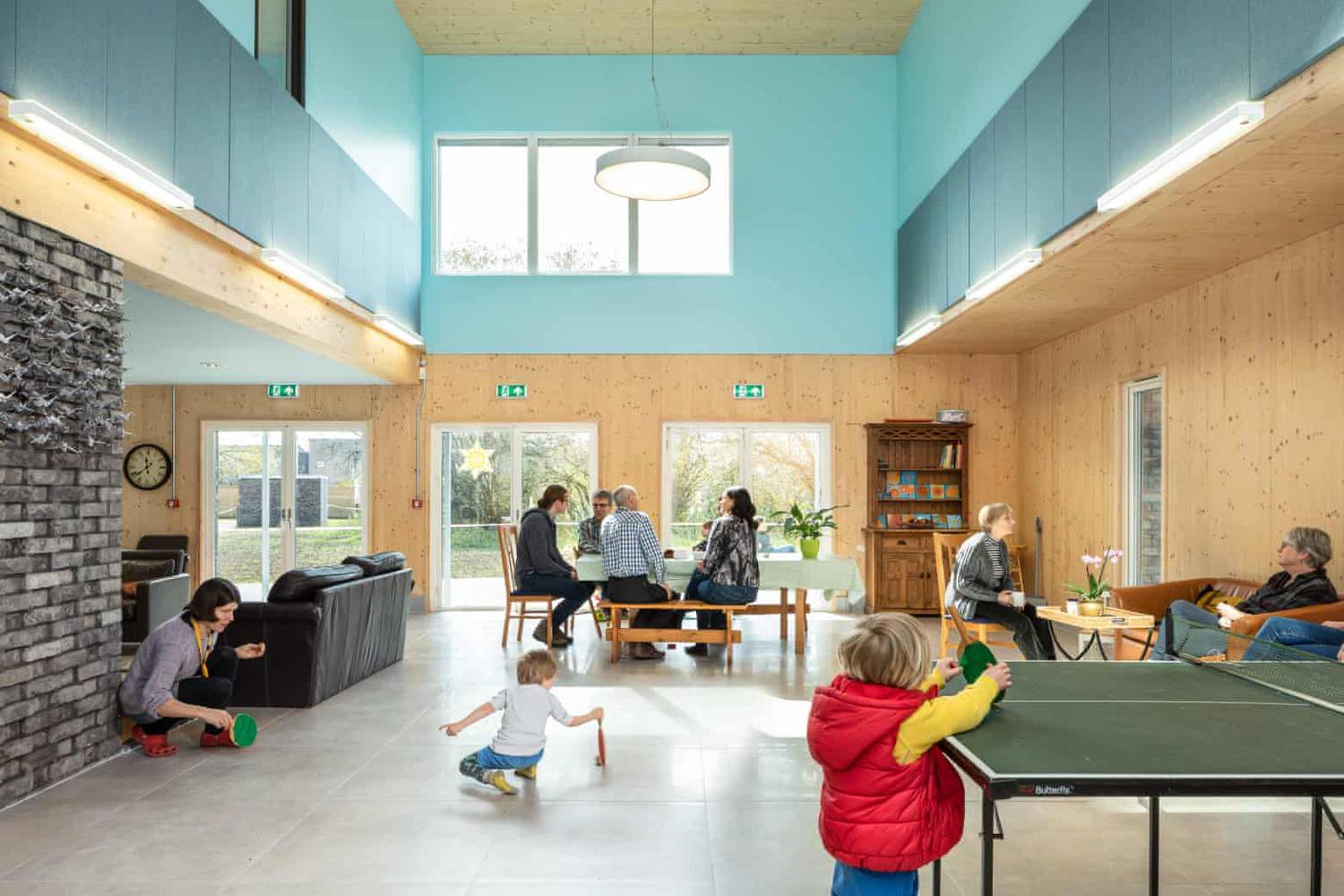What does Covid mean for the future of Co-Housing?
June 2020
By Kate Ridgway
Striking the right balance between communal living benefits and the need for social distancing could be a challenge.
Article originally published in Housing Today, June 2020.
Co-Housing has long been considered one of the more exciting movements in the housing world. This progressive approach to living, built upon shared resources is ear marked as a possible solution to the housing crisis, rebuilding the tight-knit communities of the past with neighbourly support, environmental consciousness and economic benefits. However in the current circumstances of the pandemic, the strengths and weaknesses of co-housing have been thrown into sharp relief. Communities are grappling with how to collectively support each other and ensure safety for all whilst also limiting physical interaction. The balance between collectivism and individualism has been pushed, requiring existing communities to rapidly adapt to this new way of life.
The advantages of co-housing are clear; a pre-existing, familiar community can be a great asset in supporting unwell or at-risk neighbours. Elderly residents in existing communities have reported feeling well cared for, with fellow residents checking in with them (at a distance) and sharing weekly food shops. In some cases, pairs of families have isolated together as a wider unit, enabling opportunities for shared childcare as parents balance “WFH” with family life.
Co-housing communities are ahead of the game. Since isolation began, streets, flat-bocks and villages alike have been forming Facebook and WhatsApp groups or building community noticeboards to create the collective support already prevalent in co-housing. Inter-reliance is now a necessary part of how our neighbourhoods function, and arguably how they will continue to do so post-Covid.
However in the midst of a pandemic, communal living also has it’s problems. Pooling resources, whether that be a shared garden, laundrette or car is a challenge to manage effectively at a social distance. Architecturally, co-housing schemes are designed to foster community through creating casual interactions between residents. Therefore to establish segregated rotas, keeping people apart seems at odds with this premise. Additionally, many communities have found increasing pressure on their democratic forums to effectively cope with a reality completely unexpected and unplanned for. Socially distant community meetings can become tense with varying opinions on the correct way to behave.
As the prospective date for a vaccine is more nebulous than ever, there are also questions regarding how we design future schemes to accommodate social distancing. Should each dwelling be provided with a private entrance to reduce exposure to shared surfaces? Should communal internal and external spaces be designed to allow for easy compartmentalisation to enable a smooth transition to to isolated living if social distancing becomes necessary again?
In fact, designing for flexibility is already done in many co-housing schemes in Europe as a method of future proofing. Spreedfeld in Berlin and Kalkbreite in Zurich include several multifunctional spaces or “Option Rooms” the purpose of which is decided by residents and can evolve over time. During isolation, these could be used as quarantine spaces for shared flats or post pandemic, could perhaps offer co-working spaces as flexible working is likely to become increasingly common.
To drastically change our design approach to co-housing schemes beyond this flexibility could arguably be a little excessive. Although the impact of the pandemic has been extraordinary, it is not a regular occurrence in any sense. It seems superfluous to adapt our co-housing design strategies for an event that may well never re-occur for the life span of that building and could ruin the communal spirit of the development. Another pandemic may also spread by different means, leaving precautionary methods for social distancing irrelevant.
Perhaps the main takeaway from Covid-19 is the new found awareness that community based around physical space still has a relevance in how we live today. This could mean that co-housing becomes more popular or it’s characteristics such as collective resources and committees transition across to more traditional residential communities. In fact, if our communities evolve to become social focal points combining living and working, spatial resources will become increasingly important and as such designing for flexibility and adaptability will be vital. The future of community housing may not necessarily be about prescribed space but about the allowance of the space in-between which, when hit by seismic events, is invaluable.
For further reading - Francis Wright, Head of Community Partnering at TOWN wrote an insightful piece of her experience as a resident at Marmalade Lane Co-Housing Community as part of the UKCN Newsletter.

Plaza de America Multi-Generational Community, Alicante. Image Credit: Rafa Arjones

Plaza de America Multi-Generational Community, Alicante. Image Credit: Rafa Arjones

Marmalade Lane's Common House was the heart of the community pre-Covid. Image Credit: David Butler
